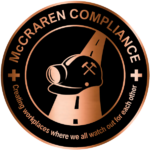
Photo: Missouri Department of Transportation
Commonly used by construction workers, cut-off saws “can be extremely dangerous because unguarded blades operate at very high speeds,” the Missouri Department of Labor and Industrial Relations cautions. The agency has created a list of do’s and don’ts.
DO:
- Wear safety shoes, fitted clothing, safety glasses, hearing protection and a hard hat while operating the saw.
- Follow the manufacturer’s recommended blade specifications for materials to be cut.
- Inspect the cutting blade for warping and damage before startup and clean the air filter.
- Test newly mounted blades at normal operating speed for 30 seconds, with the guard in place, before beginning use.
- Keep all parts of your body away from the blade while it’s running.
- Maintain good balance and footing, using both hands and a firm grip on the handles.
- Run the saw at full throttle and use the bottom of the blade while cutting.
- Keep water continuously running on the blade while cutting concrete or asphalt to keep dust concentration below established exposure limits.
- Ensure the blade doesn’t become pinched in the cut.
- Run the saw for 30 seconds after finishing a cut to allow water to be thrown off the blade.
- Use caution when handling fuel. Never add fuel while the saw is running or near an ignition source.
DON’T:
- Allow bystanders in the work area while you’re using the saw.
- Cut in the vicinity of anything flammable – most cutting procedures produce sparks.
- Use the saw without the blade guard in place.
- Exceed the maximum operating speed marked on the blade.
- Jam or wedge the blade into a cut.
- Grind on the side of the blade or cut with the top or front of the blade.
- Cut dry, except with a blade specifically designated for dry cutting by the manufacturer.
- Operate a damaged, improperly adjusted or improperly balanced saw.
“Only personnel who have been trained on proper use and handling should be allowed to operate this specialized piece of equipment,” DOLIR says.
McCraren Compliance offers a full range of safety and health training and consulting services. Plus we can help you incorporate well-being into your traditional systems in order to support the Total Worker Health of your workforce.
Call 888-758-4757, email info@mccrarencompliance.com or visit our website www.mccrarencompliance.com
Original article published by Safety+Health an NSC publication


